Ottoman Empire to 1600
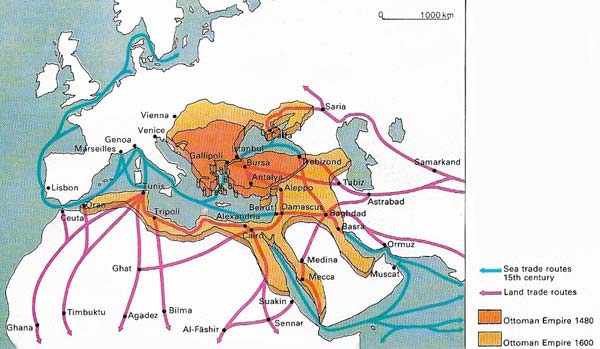
Figure 1. The major east-west trade routes were taken over by the Ottoman Empire as it absorbed the old Greek world. Trading stations in the Peloponnesus, along the Sea of Marmara and also in Cyprus, came under attack. But commercial interest was only one motive for Turkish aggression and trade profits were sometimes sacrificed to the overriding economic need for military expansion by the Ottoman state into the non-Islamic realms of Europe.
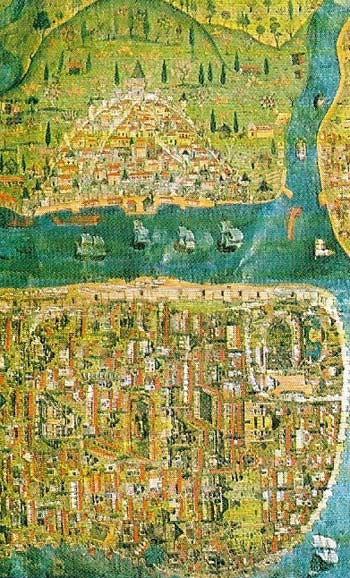
Figure 2. When Constantinople (seen here on a 15th-century map) fell on 1453 a new phase opened in Ottoman history. The great city had long been the focus of Turkish ambition, but repeated attempts to overcome it had failed. When at last the old Byzantine capital was taken it became the Ottoman Empire's cultural and administrative center.
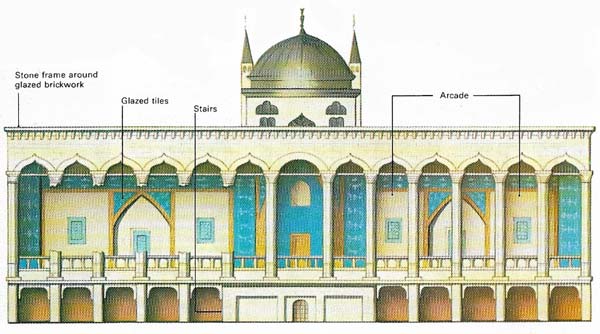
Figure 3. The Topkapi Sarayi or Old Palace was built by Mohammed II, the conqueror of Constantinople, on the site of the old Acropolis. One of the earliest Ottoman buildings in the new capital. It was the sultan's official residence and also housed the harem. It was built round a series of courtyards and was conceived on a grand scale.
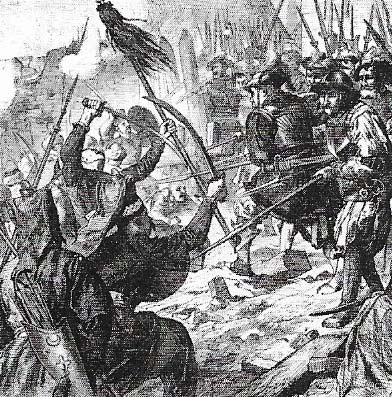
Figure 4. The first siege of Vienna, undertaken by Suleiman the Magnificent in 1529, marked the limit of Ottoman expansion on the west. The Ottoman supply lines were already stretched too far from Istanbul.
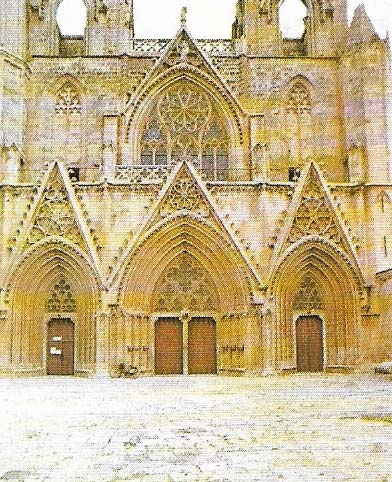
Figure 5. The Cathedral at Famagusta symbolized the magnificence of Cyprus in the 1500s. Under the Venetians it had become the wealthiest island in the Mediterranean. The Ottoman conquest of the island in 1570 was the main event on the reign of Sultan Selim II, an otherwise unworthy successor of Suleiman the Magnificent. It marked the beginning of a new phase of hostilities between Christian's in the west and the Turks. The war was fought out largely at sea and culminated a year later (1571) in the Battle of Lepanto.
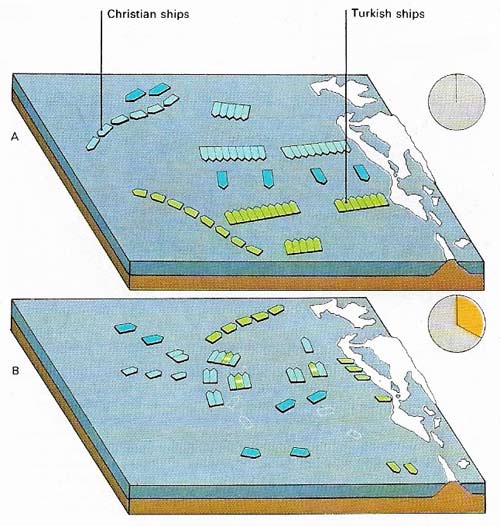
Figure 6. The Battle of Lepanto, between the allies (Spain, Venice and the papacy) and the combined Ottoman fleet was fought off the Greek coast. At the start (A), both navies were grouped in two advance lines and one rearguard. The Christians had both galleasses (dark blue) and galleys (light blue). Four hours later (B) the Turkish fleet lay scattered with most of its ships beached, sunk (white outlines) or boarded (white-barred vessels between blue).
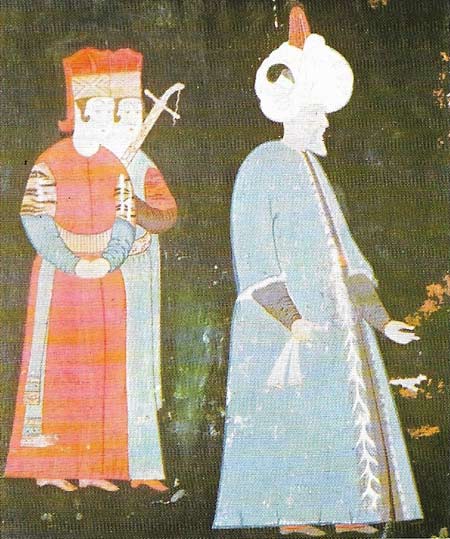
Figure 7. A miniature painting of Suleiman from mid-1500s shows the borrowing of foreign styles typical of Turkish art. The Turks adapted the skills of their subjects and there is little original Turkish art except for carpets and other textiles.
The Ottoman Turks or Osmanlis (so called after their founder Osman, who died in 1326) began as Muslim warriors who patrolled the eastern borders of the Byzantine world. Osman's military genius raised them from nomadic tribesmen lacking any political institutions or national consciousness to become the formidable potential masters of a great empire by the mid-14th century.
Osman's son and successor, Orkhan (ruled 1326–c. 1360) defeated a Byzantine army sent against him in 1329 and went on to capture Nicaea (Iznik) and other Greek cities. He annexed the neighboring Turkish principality of Karasi. But his success in the holy war against the Christians attracted numerous other Turkoman warriors voluntarily to his lucrative service. Before 1453, the emerging Ottoman state held more lands of greater extent in eastern Europe than its considerable provinces in Asia Minor.
An era of expansion
By the time Orkhan's son Suleiman had set himself up in Gallipoli in 1354, the Ottomans commanded a large enough army to begin major campaigns against Europe. Murad I, Suleiman's brother and Orkhan's successor, took Adrianople and by 1365 had made it his European capital, thus establishing a pattern of conquest whereby the Turks took over a Greek capital and with it the machinery both of government and Church administration; they employed the local clergy as tax collectors and held them responsible for the behavior of their charges. The average peasant was allowed as much freedom as he had enjoyed under Greek rule, if not more. Ottoman society was very flexible and the success of the Turks was in part due to the greater opportunities they offered to the peasant class.
The move westward was halted momentarily during the latter part of the 14th century by the incursions into Anatolia of the Tatar ruler Timur (Tamerlane). Timur set up independent Turkoman emirates and although these did not survive long, their existence demonstrated the weakness of the empire. As long as the Ottoman objective remained the conquest of European territory (and the militarist structure of the state made constant expansion a necessity) Anatolia, so vital to the survival of the empire, would be vulnerable to attack and internal revolt.
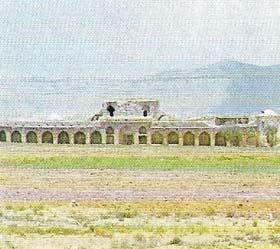 |
| Caravanserais were built as staging inns for the camel caravans that carried trade for the Ottoman Empire on a vast network of overland routes to and from the East. These routes declined when Portugal traded with India by sea. The traditional caravanserai, following the Persian model, consisted of a two-tiered building with a lower floor that consisted of stables built round an open courtyard. The oldest of these buildings still standing dates back to about 1080. |
The golden age
The golden age of Ottoman power occurred under Murad II (ruled 1421–1451) and his son Mohammed II (ruled 1451–1481). Murad was responsible for the creation of the Janissaries, a corps of troops and administrators conscripted from among the Christians of the Balkans and raised to unquestioning obedience. This levy, called the devgirme, created a new social class whose fortunes were identified with those of the sultanate.
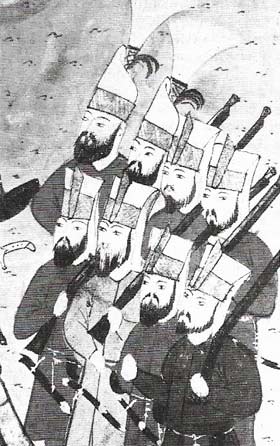 |
| The Janissaries were recruited from Balkan Christians taken at the capture of Adrianople and reared as Muslims with unquestioning obedience to the Sultan. They were not only the army's best soldiers but, after they had received timars (land grants), they formed a social class. Because they had no links with any of the traditional tribal groups, they became the sultan's chief defence against the Turkoman nobles who resented attempts to curtail their autonomy. After the 1600s, the sultanate declined and the Janissaries, like the barbarians in the Roman army in the 3rd century, came to manipulate them rather than uphold the government. |
Mohammed II, called "The Conqueror", was responsible for the demise of the Byzantine Empire. In 1453, after a prolonged siege, he took Constantinople (now Istanbul) (Figures 2 and 3), thus giving the empire the cultural and administrative centre it had lacked. Mohammed's achievement was to reunite the old Eastern Empire under a single sovereign. The translation of the sultan and his court to the new capital finally brought about the triumph of the devtirme faction over the old Turkoman nobility, but it also removed the centre of power away from Anatolia, which was to weaken still further the all-important eastern frontier.
The next major period of expansion occurred under Suleiman I, "The Magnificent" (ruled 1520–1566) (Figure 4), who took the empire still farther into Europe. The main force of the attack fell on Hungary, which in 1526 became a vassal state of the sultan. But the need to maintain a strong presence in Anatolia and the problems of supply and transport over such vast areas meant that no farther westward expansion was feasible. The siege of Vienna in 1529 (Figure 4) was a failure. The struggle by sea, however, continued, for the shipbuilding yards at Constantinople had made the Ottomans a major sea power. It was the Battle of Lepanto in 1571 (Figure 6) that reduced Turkish naval power and drove the Turks back into the eastern Mediterranean.
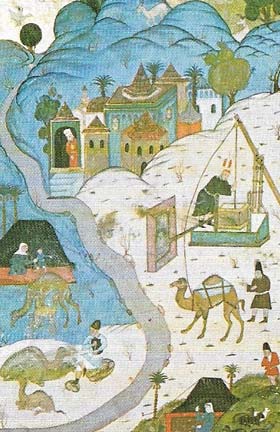 |
| Suleiman I, called "The Magnificent", brought the empire to the height of its power. Here his workmen are restoring a castle in Egypt – a mark of the extent of his military and authority. |
Decline and fall
Throughout the late 15th and the 18th centuries the two superpowers, the Ottomans and the Hapsburgs, faced each other menacingly. But by 1600 Ottoman power began to decline as a result of internal discord, factional struggles and harem politics at the centre, as well as constant pressure on the eastern frontiers. A revival occurred in the mid-seventeenth century but the second siege of Vienna failed in 1683.
The Ottoman Empire remained throughout its long history essentially tribal in structure. The divan, the sultan's administrative body, had only slight powers and although after the reign of Suleiman the grand vizier came increasingly to rule the empire, his position was always tenuous and provided no means for an easy succession on his death or loss of favor. The distribution of land in timars, quasi-feudal grants, never created a landed nobility that could identify itself with the sultan and although the dmirme gave the sultan a strong military power base, they also alienated him from the Turkoman nobility and became themselves in time a threat to his security. Despite its internal weaknesses the Ottoman Empire succeeded in knitting into a single race a group of scattered nomadic tribesmen.
